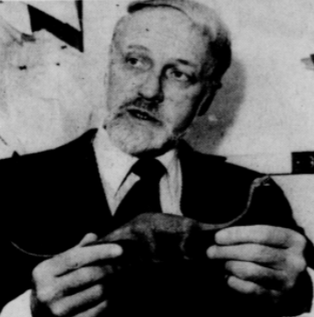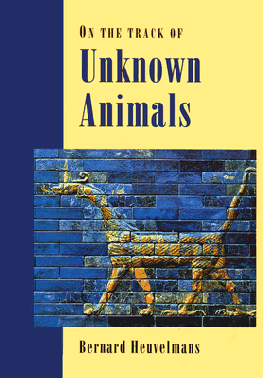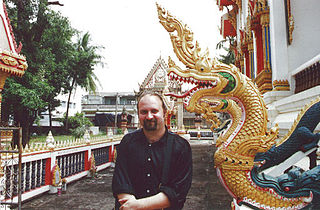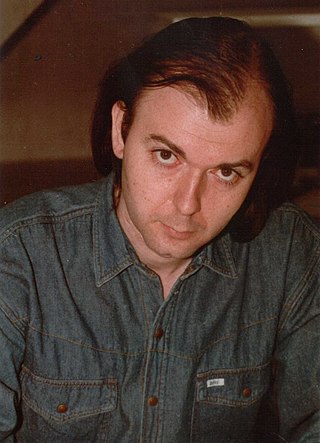| Abbreviation | ISC |
|---|---|
| Formation | 1982 |
| Dissolved | 1998 |
| Type | Organisation |
| Purpose | A focal point for the investigation, analysis, publication, and discussion of all matters related to animals of unexpected form or size, or unexpected occurrence in time or space |
| Headquarters | Washington, D.C. |
| Leader | Bernard Heuvelmans |
Main organ | Cryptozoology |
The International Society of Cryptozoology (ISC) was an organization dedicated to the field of cryptozoology founded in 1982 in Washington, D.C. It ceased to exist in 1998.
It was founded to serve as a center for documenting and evaluating topics of interest to cryptozoologists. [1] [2] The study of such animals is known as cryptozoology, and Cryptozoology was also the title of its journal. [1] The President was Bernard Heuvelmans, and the Vice-President Roy Mackal. The Secretary was J. Richard Greenwell (died 2005), of the University of Arizona. [2] [3] Loren Coleman, John Willison Green, and several other prominent cryptozoologists were either Life Members, Honorary Members, or Board Members.
The official emblem of the society was the okapi, which was chosen because, although it was well known to the inhabitants of its region, it was unknown to the European scientific community until the English explorer Harry Johnston [4] sent to London an okapi skin which received international attention in 1901. [5]
The journal Cryptozoology was published from 1982 to 1996. [6] The Society also published a newsletter ISC News. [7]
The ISC ended its activities in 1998 due to financial problems, [7] though a website continued until 2005. [8]
According to the journal Cryptozoology, the ISC served "as a focal point for the investigation, analysis, publication, and discussion of all matters related to animals of unexpected form or size, or unexpected occurrence in time or space." [2]
Cryptozoology is a pseudoscience and subculture that searches for and studies unknown, legendary, or extinct animals whose present existence is disputed or unsubstantiated, particularly those popular in folklore, such as Bigfoot, the Loch Ness Monster, Yeti, the chupacabra, the Jersey Devil, or the Mokele-mbembe. Cryptozoologists refer to these entities as cryptids, a term coined by the subculture. Because it does not follow the scientific method, cryptozoology is considered a pseudoscience by mainstream science: it is neither a branch of zoology nor of folklore studies. It was originally founded in the 1950s by zoologists Bernard Heuvelmans and Ivan T. Sanderson.

The okapi, also known as the forest giraffe, Congolese giraffe and zebra giraffe, is an artiodactyl mammal that is endemic to the northeast Democratic Republic of the Congo in central Africa. However, non-invasive genetic identification has suggested that a population has occurred south-west of the Congo River as well. It is the only species in the genus Okapia. Although the okapi has striped markings reminiscent of zebras, it is most closely related to the giraffe. The okapi and the giraffe are the only living members of the family Giraffidae.

Bernard Heuvelmans was a Belgian-French scientist, explorer, researcher, and writer probably best known, along with Scottish-American biologist Ivan T. Sanderson, as a founding figure in the pseudoscience and subculture of cryptozoology. His 1958 book On the Track of Unknown Animals is often regarded as one of the most influential cryptozoology texts.
Karl Shuker is a British zoologist, cryptozoologist and author. He lives in the Midlands, England, where he works as a zoological consultant and writer. A columnist in Fortean Times and contributor to various magazines, Shuker is also the editor-in-chief of the Journal of Cryptozoology, which began in November 2012.
Grover Sanders Krantz was an American anthropologist and cryptozoologist; he was one of few scientists not only to research Bigfoot, but also to express his belief in the animal's existence. Throughout his professional career, Krantz authored more than 60 academic articles and 10 books on human evolution, and conducted field research in Europe, China, and Java. He was a member of Mensa and Intertel, high-IQ societies.
Loren Coleman is an American cryptozoologist who has written over 40 books on a number of topics, including the pseudoscience and subculture of cryptozoology.

Ivan Terence Sanderson was a British biologist and writer born in Edinburgh, Scotland, who became a naturalized citizen of the United States. Sanderson wrote on nature and travel, and was a frequent guest on television talk shows and variety shows of the 1950s and '60s, displaying and discussing exotic animals.
Michael Newton was an American author best known for his work on Don Pendleton's The Executioner book series.

Jon-Erik Beckjord was an American paranormal investigator, photographer, and cryptozoologist interested in UFOs, crop circles, the Loch Ness Monster, and Bigfoot. Throughout his life, he owned three separate, small-scale museums that featured displays, mostly photographs, of alleged UFO, Nessie, and Bigfoot sightings. He made guest appearances on national radio and television shows, but was criticized by skeptics and fellow cryptozoologists alike for not providing substantive evidence to back up his claims of the existence of paranormal beings.

Nicholas Redfern is a British best-selling author, journalist, cryptozoologist and ufologist.

In British folklore and urban legend, British big cats refers to the subject of reported sightings of non-native, typically large felids feral in the United Kingdom. Many of these creatures have been described as "panthers", "pumas" or "black cats".
J. Richard Greenwell was a cryptozoologist and explorer. He participated in expeditions to look for mysterious creatures or cryptids. He was the secretary for the International Society for Cryptozoology from its inception to his death.

Roy P. Mackal was a University of Chicago biologist best known to the general public for his interest in cryptozoology.

On the Track of Unknown Animals is a cryptozoological book by the Belgian-French zoologist Bernard Heuvelmans that was first published in 1955 under the title Sur la Piste des Bêtes Ignorées. The English translation by Richard Garnett was published in 1958 with some updating by the author and with a foreword by Gerald Durrell. A revised and abridged edition was published in 1965, and a further edition in 1995. It is credited with introducing the term cryptozoology and established its author as the "Father of Cryptozoology."

Richard Freeman is a cryptozoologist, author, zoological journalist, and WebTV Presenter. He is also the zoological director of the Centre for Fortean Zoology (CFZ), and co-edits both the journal, Animals & Men and several editions of the annual CFZ Yearbook. Freeman has written, co-written, or edited a number of books, and has contributed widely to both Fortean and zoological magazines, as well as other newspapers and periodicals, including Fortean Times and Paranormal Magazine.

Timothy Kay Dinsdale was a British cryptozoologist who attempted to prove the existence of the Loch Ness Monster.
The International Fortean Organization (INFO) is a network of professional Fortean researchers and writers. John Keel, author and parapsychologist, in both his writings and at his appearances at INFO's FortFest, said "the International Fortean Organization (INFO) carries on Charles Fort's name as successor to the Fortean Society." Keel, Colin Wilson and John Michell were long-time advisors to the organization.

Dan Apostol was a Romanian writer and researcher, specialized in several border domains of aviation, history, archeology, ancient civilisations, art, biology, anthropology, palaeontology and cryptozoology.